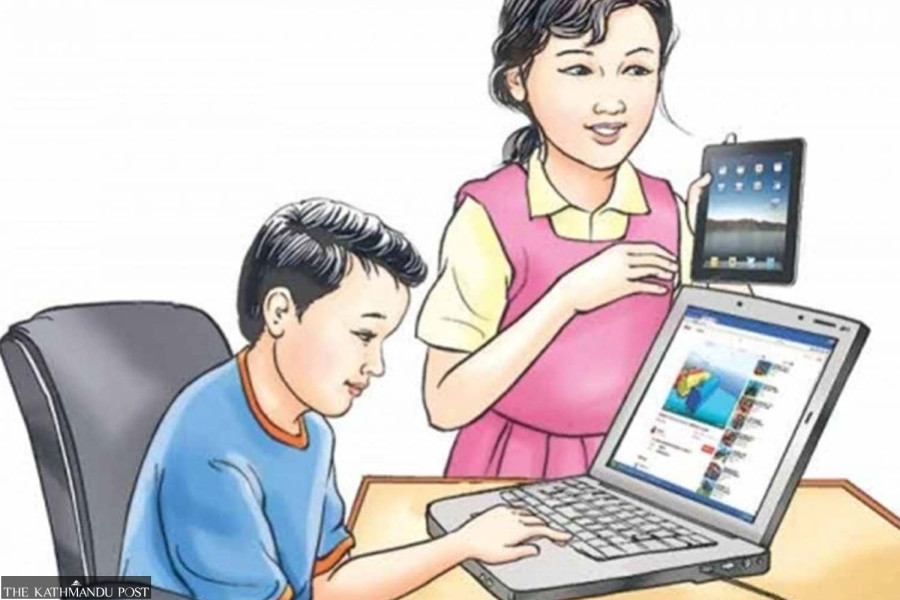Editorial
Unsupervised, unsafe
Current regulations are nearly not enough to keep Nepali children safe online.
Children of all ages have mobile phones in their hands these days. Many of them learn about alphabets or numbers even before enrolling in schools. Although the internet offers avenues for children’s development, things can quickly go awry online. In the digital landscape, children are regularly exposed to things that aren’t accessible in real life. While children are more tech-savvy than ever, there is a glaring lack of awareness on the potential dangers of the virtual world.
According to a report by The Guardian, each year, more than 300 million children worldwide become victims of online sexual exploitation and abuse. In Nepal, in under two months of the fiscal year 2024-2025, the Cyber Bureau recorded 68 cybercrime cases involving children. It logged 635 cases in the previous fiscal year, 2023-24—a 260.8 percent rise from the 176 cases in the fiscal year 2022-23. This is concerning for a nation where per capita internet usage is greater than in some developed nations even as its digital literacy rates are low.
Many Nepali parents do not hesitate to give their devices to their children to keep them engaged. This practice is hardly shocking in a country where most parents themselves are digitally illiterate. This exposes the children to harmful online spaces at a very young age. Children are naturally curious and seek validation, so people easily manipulate them online. Predators groom them into sharing nudes and personal information and even meeting in real life. The offences can turn into blackmail and threats or sextortion, where abusers demand money from the victim to keep images private, scarring the children for life. Usually, the number of crime reports does not reflect the reality as many children keep it to themselves and suffer silently.
These days, children are often more comfortable making friends online than in real life. There are ample online dating and chatting sites, gaming apps and social media platforms where one can communicate with strangers. In many cases, online sexual abuse culminates in real-life sexual violence. According to a Post report, a 13-year-old girl was sexually abused online and later raped by a 20-year-old man whom she met through an online gaming app, FreeFire. With the rise of Artificial Intelligence, child sexual exploitation online is taking new heights with deepfake and other generative AI content. According to the Internet Watch Foundation, the amount of AI-made illegal content related to child sexual abuse over the past six months has already exceeded the previous year’s total. Moreover, it also states how the dark web isn’t the only problem, as almost all the content found was on publicly available areas online.
While Nepal has implemented laws to combat online child abuse, these regulations are nowhere near enough to oversee the rapidly evolving technologies. The Electronic Transactions Act 2008 does not explicitly address online child sexual abuse. Moreover, the Act Relating to Children 2018 fails to define child pornography, grooming, sextortion or cyberstalking, which are recurring activities involved in online child sexual abuse. The Ministry of Women, Citizens and Senior Citizens in 2021 approved the Online Child Protection Procedure in 2021, where restricting children’s access to harmful content online was stated as the duty of internet service providers; however, that hasn’t been effective.
This is why it is vital that our legal mechanisms are strengthened and simple and accessible child-friendly online safety resources created. Additionally, it is imperative to spread awareness of online abuse and sexual exploitation through school curriculums. As children are exposed to online risks, even within the comfort of their homes, parents must realise that safeguarding them in the physical world is not enough.




 13.12°C Kathmandu
13.12°C Kathmandu














